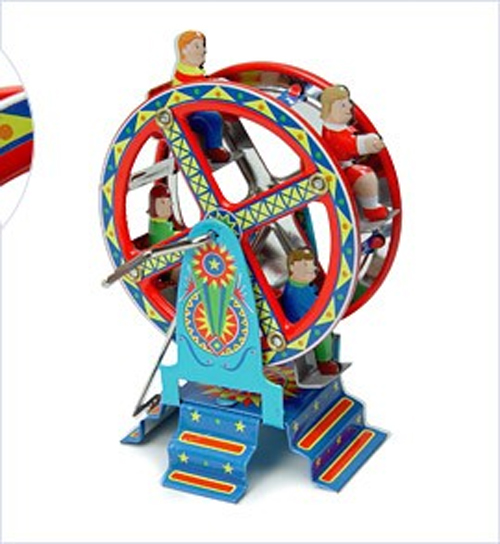Objects and visual image exemplar: toys and games
Exemplar

This was a half-term cross-curricular topic with a mixed Year 1/2 class. It focused on forces in science, storytelling in English, and objects and pictures in history.
The children in the class had a wide range of abilities, with a large number having very poor expressive language. Therefore many of the activities were based on discussion, to develop their speaking and listening skills.
We arranged for the local Museum Service to deliver a collection of old toys. These included a musical box, books and building bricks; and we also used our school collection of wooden toys, including a diablo, skipping rope, whip and top, cup and ball, and skittles.
Lesson activities
The children took a question sheet home to ask their parents, grandparents or other carers about the toys they had played with as children. When the children brought back the answers, we compiled a class list of all the things the children had found out. We discussed the differences and similarities we could see.
Looking at paintings
One group of children (Year 2s) studied Breughel's painting Children's games and made a list of all the toys and games they could see. (A Google images search on "Breughel childrens games" will produce several versions of this.) Children then made a list of the games we still play today.
Using the 'flash' technique, I gave the class a quick look at a painting by Leonard Campbell Taylor called Battledore, which depicted two young ladies playing the game of battledore, a precursor to badminton. (There's a suitable picture here). The children had to say what they had seen during the quick flash. Then I gave them a longer look and eventually we discussed the painting in detail. The children decided what the ladies in the picture were doing. We discussed badminton and looked at modern shuttlecocks.
Inventing games
The children invented games for racquets and shuttlecocks and wrote rules about how to play the games. In small groups they taught each other how to play their games and tried them out.
Toy Museum
We created a class Toy Museum for a day. In preparation for this, one group of children made a worksheet for visitors to the museum with objects to find and questions to answer. Other children made tickets and signs. Then the children set up the classroom as the Museum, deciding how to arrange and display the toys.
On the day, the children were given responsibility for different displays in the room, where they answered questions and demonstrated the games and how the toys were used. The museum's visitors were other key stage 1 classes and the children's parents.
Reflection
I found that the children retained far more information about what their parents and carers had told them than they did from books and pictures. Next time I will invite a parent or a local elderly resident to come and speak to the children about their childhood toys.
I was pleased with the way the children were able to communicate what they had learnt during the museum activity. They were proud of their work and wanted to share what they knew.
The Museum Day at the end of the topic was a very good way for the children to organise and communicate what they had learnt about toys and games. It provided an opportunity to review what we had done over the half-term topic.

